Indiana, U.S. Education Varies by Age Group
Citizens of Indiana and the nation have made forward strides in the past decade in educational attainment. More of us had completed college in 2000 than was the case in 1990 according to the latest Census data. Those changes are detailed in the accompanying tables and graphics.
Table 1 presents the data on educational attainment by level and age for the nation and Indiana. By following each column down, the distribution of education within an age group can be seen.
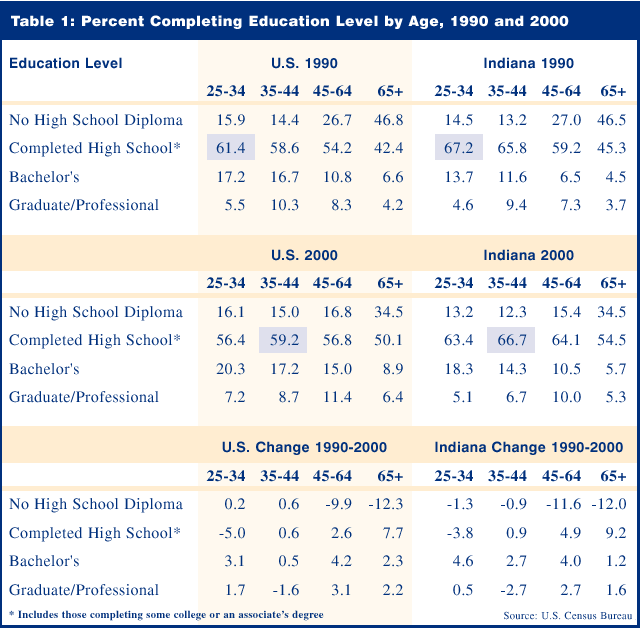
In Figure 1, the data for individuals ages 25 to 34 are shown. In 1990, for the U.S., 22.7 percent had completed college, while in Indiana that number was 18.3 percent-a gap of 4.4 percent. By 2000, the gap had closed to 4.1 percent with the U.S. at 27.5 percent and Indiana at 23.4 percent.
Figures 2, 3 and 4 repeat the display of the data for successively older age groups. Space constraints do not allow a detailed recitation of the data, but certain highlights can be noted.
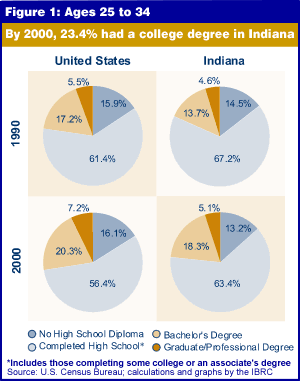
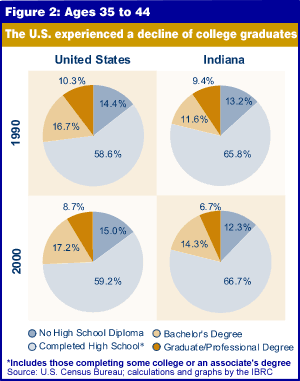
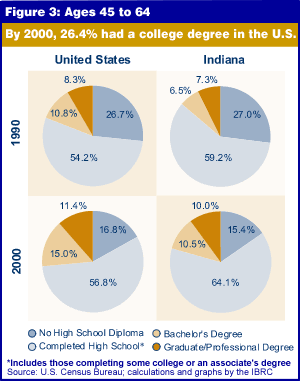
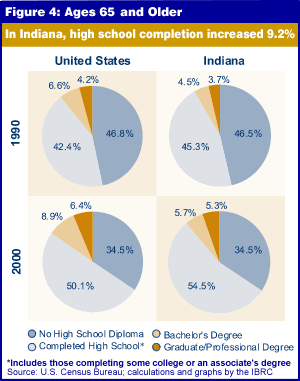
Although Indiana closed the gap between itself and the U.S. among 25- to 34-year-olds, the gap increased for the 45- to 64-year-old and 65 and older groups. This would be consistent with out-migration of more educated people from the state.
In the 35 to 44 age group, the U.S. saw a decline in the percent of those who had completed college, while Indiana had no change in its percentage. This suggests that nationally a key portion of the labor force (those ages 35 to 44) have less college training today than their counterparts ten years earlier. Is this a result of the in-migration of less educated people? That hypothesis is consistent with the increases in the percent of individuals in the same age group who had not completed high school and those who had completed high school but not college.
Looking at the population ages 35 to 44 as compared with the group 25 to 34 ten years earlier (the cohort), Table 1 shows a decline in educational attainment (see highlighted boxes). Unless there is some bias in death, the educational attainment of a cohort should not fall. But this could occur if in-migrants had lowered the educational attainment levels. The same phenomenon can be observed in the Indiana data.
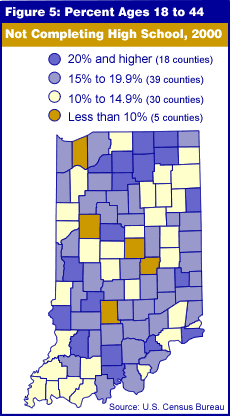
What is the status of educational attainment in Indiana counties? Figure 5 summarizes one aspect of these data: the percent of the population ages 18 to 44 who have not competed high school or do not have an equivalency degree.
Whenever county data are reviewed, it is best to remember that Indiana has a large population that does not participate in public schools for religious reasons and are therefore exempt from the analysis. For example, it is not surprising to find that 47 percent of the population ages 18 to 44 in Lagrange County have not completed high school. However, it should be distressing for all economic development purposes to find that only five counties (which include the university counties of Monroe and Tippecanoe) are below 10 percent in this measure.
Morton J. Marcus
Executive Director, Indiana Business Research Center,
Kelley School of Business, Indiana University
